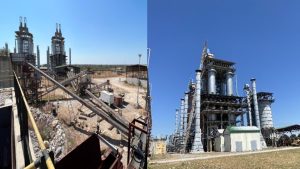A tingle of intrigue often precedes the discovery of an unconventional avenue in a seasoned portfolio. Beneath the unassuming façades of clinics and care homes lies a landscape that defies standard property cycles. This is not the familiar tale of high-street retail or suburban housing; it is a chapter waiting to be read by those ready to look beyond yield curves and into the walls where wellbeing and economics converge.
Stepping into the realm of medical real estate reveals more than bricks and mortar. It exposes a network of collaborations between property owners and healthcare providers, where facilities from diagnostic centres to specialist treatment suites lock in tenants on extended agreements, often shielded from the typical ebb and flow of general leasing markets. For the savvy investor, these arrangements translate into income streams anchored by demographic imperatives, ageing populations and an ever-expanding demand for outpatient services, rather than the fickle whims of consumer confidence.
Rather than a uniform asset class, healthcare property spans community clinics in growth corridors, immediately accessible urgent care clinics, and purpose-built hospitals boasting advanced imaging wings. Each niche comes with its own risk-reward balance. Community clinics may offer moderate entry costs and steady demand, especially in regions with emerging suburban footprints. Conversely, larger hospital complexes require substantial capital yet can secure tenants through long-term joint ventures with major health networks, effectively transferring operational uncertainties away from the landlord. In both instances, the underlying driver is consistent: people need care regardless of broader economic cycles, delivering a natural form of downside protection.
It is tempting to view these structures solely through the lens of tenancy length. Yet the true value proposition emerges from the symbiotic relationship between landlord and operator, where adherence to stringent regulatory standards becomes a built-in incentive for maintaining asset quality. A radiology centre cannot compromise on power supply or air filtration without jeopardising patient safety, and that obligation trickles down to the investor, who benefits from meticulously maintained facilities. This embedded maintenance culture often surpasses that seen in conventional commercial real estate, where cost-cutting can erode asset value over time.
Furthermore, healthcare real estate is buoyed by evolving trends in medical delivery. The shift towards outpatient procedures and telehealth hubs has ripple effects on property needs. Investors attuned to these shifts can cherry-pick assets that cater to diagnostics and day surgeries, avoiding large inpatient towers whose demand may plateau. Smaller footprints, strategically located near transport links or in densely populated suburbs, allow for agile redeployment should tenant needs evolve. Thus, an investor not only captures rent but also inherits a degree of future optionality.
Geography plays its part too. Regions with supportive planning frameworks for medical infrastructure, perhaps spurred by local health authority partnerships, can offer expedited development approvals. Engaging with local stakeholders early, particularly when repurposing existing commercial shells into clinics—can reduce upfront construction risk and time to revenue. Such collaborative developments often benefit from public-private financing models, smoothing cash flow during the build phase and accelerating investor returns once operations commence.
Physicians Capital are the only physicians-owned private real estate investment firm that allows doctors to reclaim ownership, generate passive income and build long-term wealth.












































